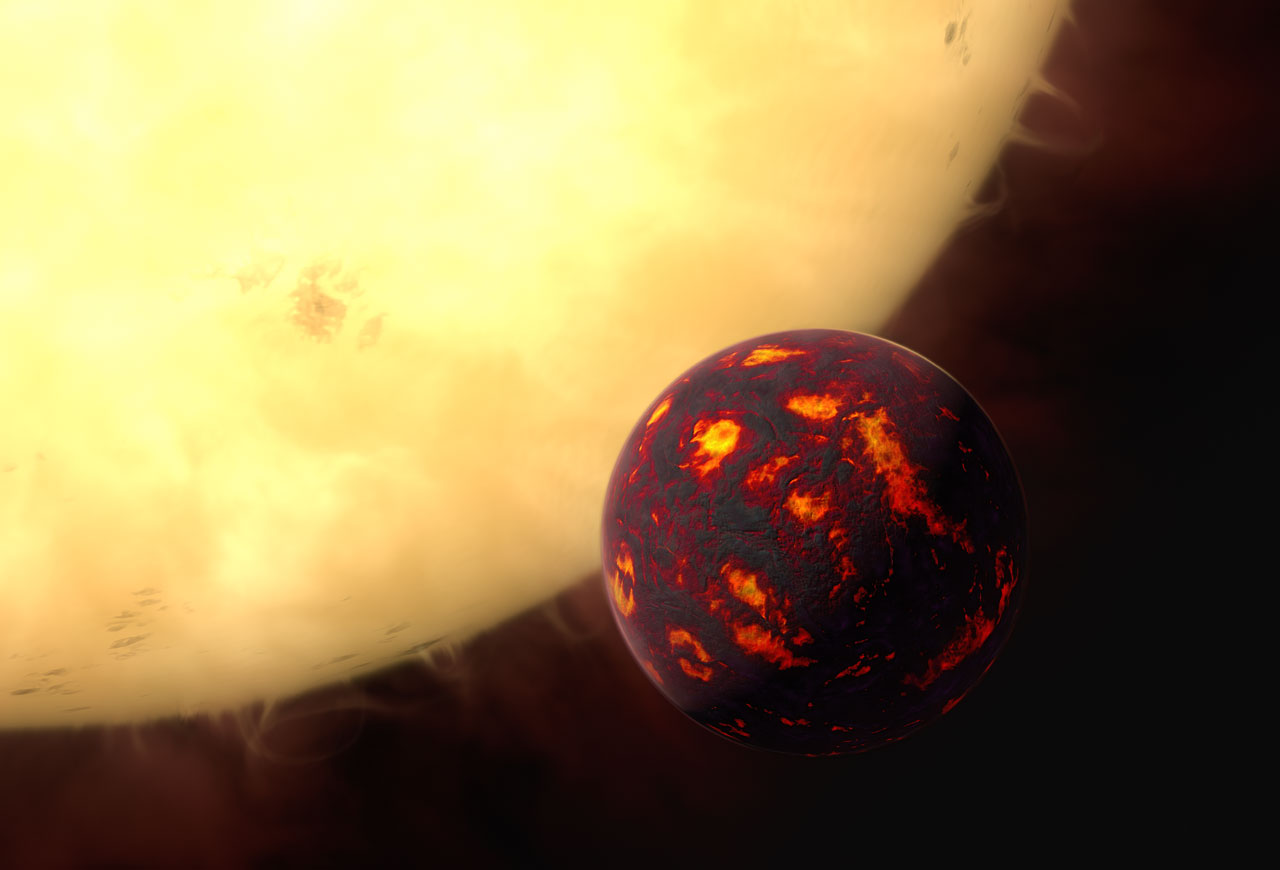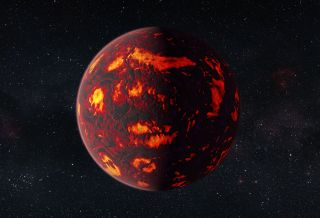
The atmosphere of a "super-Earth" exoplanet, the most common type of world in the galaxy, has been characterized for the first time ever.
Astronomers using NASA's Hubble Space Telescope detected hydrogen and helium, but no water vapor, in the air of 55 Cancri e, an alien planet about two times wider and eight times more massive than Earth that lies 40 light-years from our solar system.
"This result gives a first insight into the atmosphere of a super-Earth," study co-author Giovanna Tinetti, of University College London (UCL) in the United Kingdom, said in a statement. "We now have clues as to what the planet is currently like and how it might have formed and evolved, and this has important implications for 55 Cancri e and other super-Earths." [Oozing Super-Earth: Images of Alien Planet 55 Cancri e]
Super-Earths are slightly larger than our home planet but smaller than ice giants such as Neptune or gas giants like Saturn. Observations by NASA's Kepler space telescope and other instruments suggest that super-Earths are the most abundant type of planet in the Milky Way.
55 Cancri e is exotic in pretty much every sense of the word. The exoplanet lies extremely close to its host star, completing one orbit every 18 hours. It is therefore almost certainly too hot to host life as we know it; surface temperatures on 55 Cancri e are thought to reach 3,630 degrees Fahrenheit (2,000 degrees Celsius), the researchers said.
55 Cancri e was discovered in 2004. In 2012, a modeling study based on the planet's mass and radius, as well as the composition of its host star, suggested that 55 Cancri e's interior contains a great deal of carbon. In fact, the study's authors reported, the super-Earth may be a "diamond planet," composed largely of bling.
A later study reported that 55 Cancri e's host star is likely not as carbon-rich as previously thought, casting doubt on the planet's glam nature. But diamond-planet enthusiasts take heart: The new study of 55 Cancri e's atmosphere found hints of hydrogen cyanide, which would indicate carbon-rich air, the researchers said.
Get the Space.com Newsletter
Breaking space news, the latest updates on rocket launches, skywatching events and more!

"If the presence of hydrogen cyanide and other molecules is confirmed in a few years' time by the next generation of infrared telescopes, it would support the theory that this planet is indeed carbon-rich and a very exotic place," co-author Jonathan Tennyson, also of UCL, said in the same statement.
However, he added, "hydrogen cyanide, or prussic acid, is highly poisonous, so it is perhaps not a planet I would like to live on!"
The study team scanned 55 Cancri e's sunlike parent star using Hubble's Wide Field Camera 3 instrument, creating a number of spectra. The researchers then deduced the planet's atmospheric composition using analytical software.
"The observations of 55 Cancri e's atmosphere suggest that the planet has managed to cling on to a significant amount of hydrogen and helium from the nebula from which it originally formed," said lead author Angelos Tsiaras, a Ph.D. student at UCL.
The study has been accepted for publication in the Astrophysical Journal.
Follow Mike Wall on Twitter @michaeldwall and Google+. Follow us @Spacedotcom, Facebook or Google+. Originally published on Space.com.
Join our Space Forums to keep talking space on the latest missions, night sky and more! And if you have a news tip, correction or comment, let us know at: community@space.com.

Michael Wall is a Senior Space Writer with Space.com and joined the team in 2010. He primarily covers exoplanets, spaceflight and military space, but has been known to dabble in the space art beat. His book about the search for alien life, "Out There," was published on Nov. 13, 2018. Before becoming a science writer, Michael worked as a herpetologist and wildlife biologist. He has a Ph.D. in evolutionary biology from the University of Sydney, Australia, a bachelor's degree from the University of Arizona, and a graduate certificate in science writing from the University of California, Santa Cruz. To find out what his latest project is, you can follow Michael on Twitter.